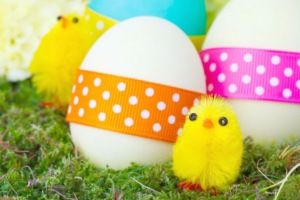Opinion
A Dane Abroad: Surviving the Danish Easter
Kirsten Louise Pedersen
This article is more than 7 years old.

Slaughtered lambs and the end of Lent have made way for chicks and chocolate
As Easter is approaching it occurred to me how differently it is celebrated around the world. It’s yet another festive season originally rooted in religion – crucifixion, Lent and suchlike – which a lot of people clearly no longer relate to as they stuff their faces with chocolate, get legless on Easter brew and enjoy the long weekend!
Seasonal crossroads
In Denmark, Easter is a spring event signalling that summer is near. In the Southern Hemisphere, Easter marks the end of it. In New Zealand it’s said that if you’re still swimming in the sea during Easter weekend, it’s been a good summer.
Festive seasons in Denmark naturally involve arts and crafts. Decorated ‘troldegrene’ (troll branches), intricately curly branches with painted eggs and coloured ribbons, are a common sight in Danish homes. Daffodils and snowdrop flowers are indicators of spring in Denmark and have therefore become synonymous with Easter.
Easter Valentine cards
A ‘gækkebrev’, occasionally referred to as a ‘snowdrop letter’ in English, is an Easter tradition that in Danish history dates back as far as the 17th century.
First a decoration is made from cutting shapes off a folded up piece of paper to create a pretty symmetrical pattern when unfolded. And then inside the decoration a poem is written, often including the words: “Mit navn det står med prikker, pas på det ikke stikker” (my name is written in dots, careful they don’t sting – this phrase rhymes in Danish!).
The poem is then signed with dots instead of letters – each dot represents a letter in the sender’s name – and sneakily dropped into the mailbox (showing my age) of an unsuspecting recipient. If they are unsuccessful in guessing the creator of the gækkebrev, they are obliged to give them a chocolate Easter egg! Needless to say, grandma got carpet-bombed.
Egg-cellent fun for all
Easter in Denmark tends to include some sort of egg game, whether it’s hiding chocolate ones for a hunt, or rolling real ones down a (small) hill. Egg-painting is popular, but traditions vary from family to family. Some, for example, might sit down on the morning of Easter Sunday and paint their soft-boiled eggs before eating them.
More universal is a big meal – normally a classic Danish lunch enjoyed with your extended family with schnapps and beer. Traditional Danish lunches are world famous for being scrumptious and are enjoyed throughout the year at various key occasions. Stuffing your face with chocolate eggs, on the other hand, is a rather global tradition these days.
As well as the mountains of Easter eggs, many English-speaking countries around the world will serve up ‘hot cross buns’ (sweet, spiced fruit buns with a symbolic cross glazed on top) as an Easter treat. The hot cross bun originally marked the end of Lent.
To drink or not to drink
Denmark is never one to pass up an opportunity to brew beer! A number of special beers are launched over Easter – often spiced and much stronger than your usual ranges. Needless to say Easter is a jolly season in Denmark!
Unlike beer-swiggin’ Denmark, resilient religious rules still prevail over Easter in some countries. In New Zealand, for example, it is illegal to sell alcohol on Good Friday and Easter Sunday. Alcohol can be served in restaurants – but only if accompanied by food.
Heads up, a sneaky bowl of shoestring fries won’t cut it (I’ve tried). No cap will come off a bottle of booze unless a sensible, full meal is ordered!

About
Kirsten Louise Pedersen
Born and raised in Denmark, Kirsten Louise Pedersen jumped ship in her early 20s to spend the next 12 years living in New Zealand. A physiotherapist, acupuncturist, yogini and foodie, she has a passion for life and well-being. After a few stints back in the motherland, Kirsten is once again back living in Aotearoa, New Zealand. Follow her on Instagram and Facebook @kirstenlouiseyoga










































